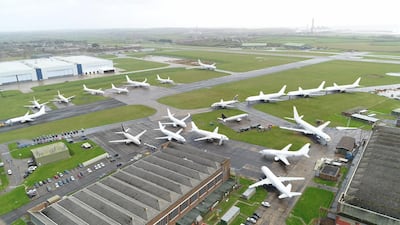


















































Covid-19: How unwanted planes are parked in aircraft boneyards across the world
It's been one year since the UAE first grounded flights because of the global pandemic, and the world's aircraft graveyards are littered with parked jets

Hayley Skirka
March 22, 2021
- Listen in English
- Listen in Arabic